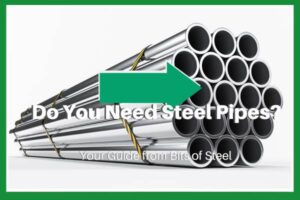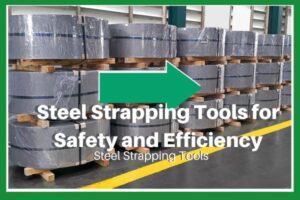Press molding is a widely used manufacturing process for creating parts and components from metal.
It involves using a press machine to shape and form the metal into a desired shape.
However, the process can be complex and require multiple stages to achieve the desired results.
In this article, we will provide an overview of how to determine if a press mold needs more stages, and how to optimize the process for metalworking and engineering professionals.
We will also be discussing how Bits of Steel, a steel supplier in Australia, can aid in providing high-quality steel materials that can be used in press molding process and technical support and guidance.
This guide will provide valuable information for anyone involved in the press molding process and help ensure that the final product meets the desired specifications.
Evaluating the Desired Final Product: The Initial Step in Determining Additional Stages in Press Molding
The first step in determining if a press mold needs more stages is to evaluate the desired final product.
The complexity of the part, the material being used, and the required precision will all play a role in determining the number of stages needed.
A simple, basic shape with minimal precision requirements may only require a single stage, while a more complex, intricate shape with high precision requirements may require multiple stages. It’s worth noting that as a steel supplier in Australia, Bits of Steel, provides high-quality steel materials that can be used in press molding process.
Assessing the Current Press Molding Process: Identifying Potential Improvements and Additions
Once the desired final product has been evaluated, the next step is to assess the current press molding process.
This includes evaluating the current press machine and tooling, as well as the process itself.
Factors such as the amount of pressure being applied, the speed of the press, and the temperature and cooling processes all play a role in determining if additional stages are needed.
Determining the Impact of Material Properties on Press Molding: A Critical Consideration
Another important consideration is the material being used.
Different materials have different properties and characteristics, and these can affect the press molding process. For example, some materials may require higher temperatures or longer cooling times, which can impact the number of stages needed.
Additionally, certain materials may be more prone to cracking or warping, which can also impact the number of stages needed. In this aspect, as a steel supplier in Australia, Bits of Steel can help you with the best quality of steel materials that can meet the requirements of your press molding process.
Adjusting the Press Molding Process: Making Necessary Changes to Achieve Desired Results
Once the current process has been evaluated, the next step is to determine if any changes or adjustments are needed.
This may involve making changes to the press machine or tooling, such as installing new dies or adjusting the pressure and speed. It may also involve adjusting the process itself, such as adding additional cooling stages or increasing the temperature.
In addition to making changes to the process, it may also be necessary to add additional stages to the press molding process. This can include adding additional metal-folding stages, or incorporating additional engineering stages to ensure that the final product meets the desired specifications.
When determining the need for additional stages in press molding, it is important to work closely with experienced metalworking and engineering professionals.
They can provide valuable guidance and expertise in optimizing the process and ensuring that the final product meets the desired specifications.
And as a steel supplier in Australia, Bits of Steel can help you with the best quality of steel materials that can meet the requirements of your press molding process as well as provide you with the technical support and guidance.
In conclusion, determining the need for additional stages in press molding can be a complex process that requires careful evaluation of the desired final product, the current process, and the materials being used.
By working closely with metalworking and engineering professionals and making necessary adjustments, it is possible to optimize the press molding process and achieve the desired results.











